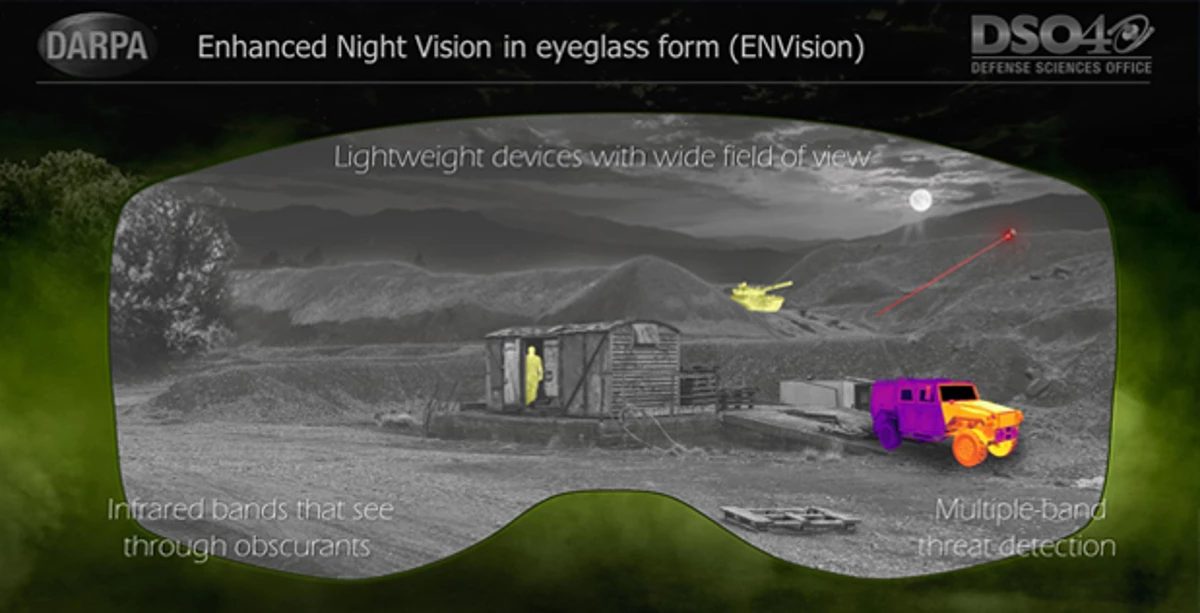DARPA is starting a program to develop a new multispectral Enhanced Night Vision (ENVision) system for the military that replaces today's heavy night-vision goggles with ones that are as light and compact as a pair of eyeglasses.
Night-vision devices were first developed before the Second World War, but only became practical in the 1960s. Since then, they have revolutionized warfare by effectively eliminating the cover of darkness as protection for a hostile force. Where once aircraft and ground troops were effectively nullified by the fall of night, pilots and soldiers can now operate as if it was high noon.
However, the technology is far from mature even after four or five development generations. The devices have become more sophisticated and sensitive, with the capability to see across more of the infrared spectrum as well as seeing heat signatures, but night-vision goggles remain bulky and heavy, with a field of vision that's a third that of the naked eye.
The weight is a particular problem because the goggles are usually on a helmet mount where they stick out about five inches (12 cm) and put a great deal of strain on the user's neck. This is made worse by the narrow field of vision that requires frequent head turns over the course of several hours.

DARPA's new ENVision program looks to use the latest advances in photonics and optical materials by the agency's Defense Sciences Office (DSO) to replace the complex electronics with a single flat lens. This would involve using planar optics, new light detection materials, and light-matter interactions. In addition, the program will look at ways to use thin materials to directly convert photons from the infrared to the visible band of the spectrum instead of using a vision processing system.
"This will further simplify NVG systems by advancing from the multi-step conversion currently used to a single step up-conversion process," says Rohith Chandrasekar, program manager in DARPA’s Defense Sciences Office. "Some of these processes even conserve the momentum of photons, which, in theory, could enable night vision without the need for any optics."
DARPA is holding a webinar for the project as part of a Proposers Day on January 21, 2021.
Source: DARPA





